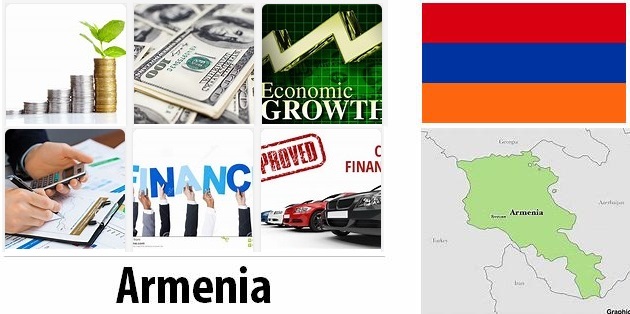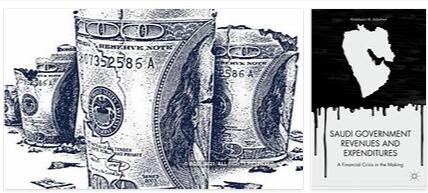Armenia Economy Facts
Economical overview
Armenia is still largely an agricultural country, even though the government is investing in an expansion of the service sector. The industry that was set for military production during the Soviet era (1920–1991) has been transformed, and today diamonds and metals are the most important export products. However, large parts of the economy have stagnated, while the IT sector has grown over a number of years.
During the Soviet era, Armenia manufactured industrial goods for other Soviet republics and received fuel and raw materials from them. The system collapsed when the Soviet Union disbanded in 1991. The Armenian economy was already severely strained by a 1988 earthquake and conflict over Nagorno-Karabakh (see Modern History). The earthquake claimed at least 25,000 lives and made half a million homeless. The conflict over Nagorno-Karabakh caused large refugee flows, and in its wake, Azerbaijan introduced a yet-ongoing economic blockade in 1989, to which Turkey joined in 1993 as well.
- Countryaah.com: Major imports by Armenia, covering a full list of top products imported by the country and trade value for each product category.
Independent Armenia immediately began to privatize business, at first, smaller companies. Armenia was the first of the Soviet republics to privatize agricultural land. Prices were released on a number of goods, trade abroad was liberalized and a new tax system was introduced. But despite all the reforms, the economy stagnated. The lack of an effective banking system and investment protection laws deterred both foreign and domestic investors. The bottom was reached during the war years 1992–1993, when the gross domestic product (GDP) was more than halved. Almost all industries stood still because of fuel shortages. Heat was lacking in homes, schools and hospitals. The government took out large loans to cover the holes in the budget. In 1993, the Armenians introduced their own currency, dram.
- Abbreviationfinder.org: Check this abbreviation website to find three letter ISO codes for all countries in the world, including ARM which represents the country of Armenia. Check findjobdescriptions to learn more about Armenia.
Turning point 1994
After a ceasefire in Nagorno-Karabakh in 1994, the situation began to brighten and production increased. The soaring inflation did not fall until the following year, but then drastically. In 1995, a second phase of privatization began, when large industrial companies began to sell out. Many major Soviet industries were closed for good, because no one wanted to buy their products anymore. An economic reform program was started in collaboration with the International Monetary Fund (IMF). Privatizations have continued, but large companies have not been as productive as one hoped.
After the turning point in 1994, GDP grew until 2008, several years in a row by over 13 percent. But growth benefited most groups in the cities, while many, especially in the countryside, remained poor. Yet in 2012, almost one in three Armenians, according to official data, lived below the poverty line. Unemployment had then officially dropped to about 6 percent, but the figure is likely to hide a lot of underemployment. Moreover, transfers from Armenians working abroad, especially in Russia, make up a tenth of the country’s GDP.
The unresolved conflict over Nagorno-Karabakh is a strain on the Armenian economy. Defense costs remain high, and Armenia remains excluded from the role of Caspian oil transit country. Keeping the regime in Nagorno-Karabakh under arms costs large sums. At the same time, however, both Armenia and Nagorno-Karabakh receive generous assistance from exiled Armenians abroad, primarily in the United States, and also from the US state. Armenia is one of the countries in the world that receives the most aid per inhabitant. A prominent future venture is IT courses for teenagers. The tumor project is financed by exile alarm menus based in the USA.
Russia has also invested heavily in Armenia. Russian influence continues to characterize all strategically important sectors, such as energy and telecommunications.
Increased foreign debt
Through the large flow of money from exile Armenians, Armenia initially hoped to be able to avoid the worst effects of the world economic crisis that erupted in 2008. But the money transfers began. On March 3, 2009, the Central Bank of Armenia gave up attempts to maintain the value of the currency, dram, which fell freely and lost 30 percent of its value in a single day. During the year, GDP fell by almost 15 percent.
In early 2009, Armenia received promises from the World Bank on loans of up to $ 800 million over four years, mainly to develop rural infrastructure and stimulate small and medium-sized businesses. Shortly thereafter, a contract was signed with Russia for a loan of $ 500 million and in 2010 the IMF received a sign of a three-year loan of close to $ 400 million. The money would be used to stabilize the economy, secure growth and reduce poverty, among other things.
The external debt shot up after 2008 and has in recent years corresponded to more than 50 percent of GDP, dangerously close to the level at which the central government may find it difficult to handle repayments on the loans. Foreign debt has remained a concern, but the economy has undergone some recovery in recent years. Productivity, foreign investment and tourism have grown, copper prices have risen and in 2017 the highest growth rates were recorded since the pre-crisis 2008-2009. According to the World Bank, the “velvet revolution” 2018 does not appear to have disturbed this development.
However, corruption in business, the judiciary and the state administration is still a major problem. Most economic and political analysts also believe that Armenia’s hope for a stable economy lies in good trade relations with neighboring countries, which presupposes that the Nagorno-Karabakh conflict can be resolved and that lasting improvement can be achieved in relations with Turkey and Azerbaijan.
Concrete things, such as road connections with abroad, are also limited by the insanity. Two roads have been built to the Nagorno-Karabakh enclave, which is enclosed by Azerbaijan, and a third is planned. Road construction is largely funded by donations from Armenians in other countries and protected by the Armenian military. Despite mountainous terrain there are railway lines, but they are in need of renovation. Armenian train traffic is operated by a Russian company, through a concession agreement. Plans for a new line between Armenia and Iran have not been implemented.
There are plenty of sights, especially related to Christian history, but most of the tourists are still exiles.
FACTS – FINANCE
GDP per person
US $ 4,212 (2018)
Total GDP
US $ 12,433 million (2018)
GDP growth
5.2 percent (2018)
Agriculture’s share of GDP
13.7 percent (2018)
Manufacturing industry’s share of GDP
11.3 percent (2018)
The service sector’s share of GDP
52.6 percent (2018)
Inflation
1.7 percent (2019)
Government debt’s share of GDP
51.3 percent (2018)
External debt
US $ 10 335 million (2017)
Currency
DRAM
Merchandise exports
US $ 2,630 million (2018)
Imports
US $ 4,420 million (2018)
Current account
– US $ 1,165 million (2018)
Commodity trade’s share of GDP
59 percent (2018)
Main export goods
metals, minerals, diamonds, food
Largest trading partner
Russia, Germany, China, Iran













